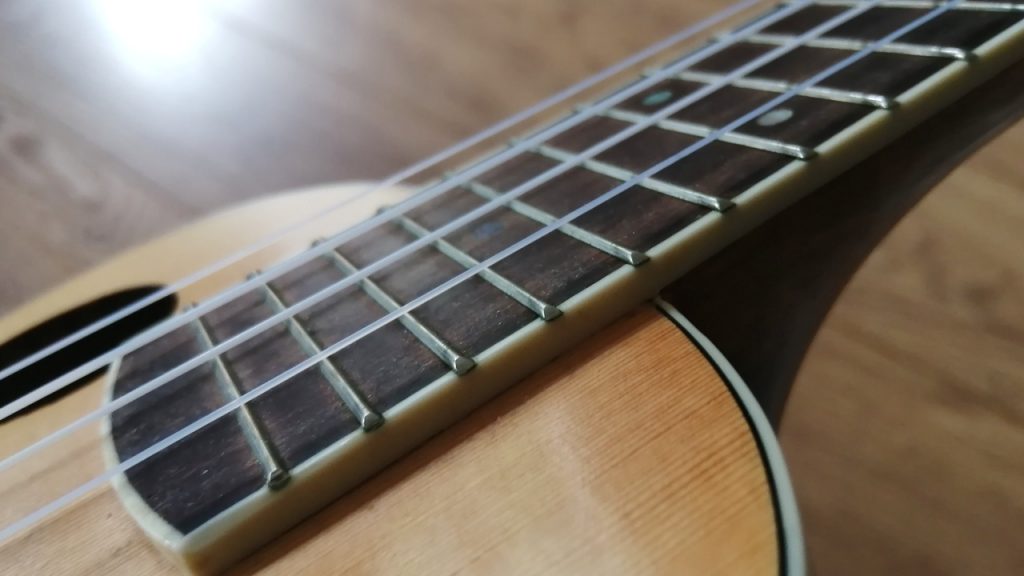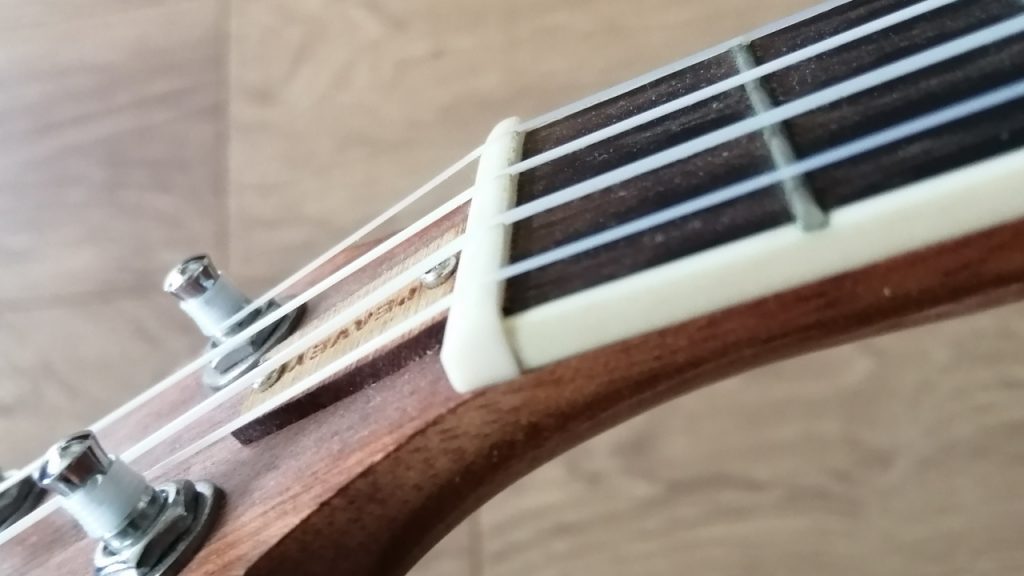Today’s post is all about checking a ukulele to make sure there are no major issues with it.
Recently I found myself with a new ukulele. This gave me the perfect opportunity to detail some of the checks I do when I get a new ukulele.
Everything listed below is pretty basic. You don’t need to be a ukulele virtuoso to give the instrument a quick once over.
The three main steps I take are:
- Take a good look at your ukulele
- Tune your ukulele up
- Check every fret
Let’s go through those steps in a little more detail.
Take A Good Look
The first thing I do is take a really good look at the ukulele. I’m looking for any issues with the build. Starting with the obvious, make sure there are no cracks in the uke. Examine the body all over and make sure you’re either in a well lit room or there’s a lot of natural light available.

Once you’ve taken a good look to make sure there are no cracks, it’s time to start looking in a little more detail. At this point I’m looking at the nut and the bridge to make sure there are no gaps and everything is well connected. I’ll also look at where the fretboard meets the neck and where the neck meets the body of the ukulele.
It’s also worth taking a hard look at the fretboard at this point. Cracks can be difficult to see on a fretboard unless you’re looking for them specifically.
Finally, take a good look at the tuning pegs. Are they screwed in well? Make sure they’re all aligned (none of them seem wonky) and nothing seems loose.
Tune It Up
Once you’ve give the ukulele a good solid visual inspection, the next step is to get it in tune. If this is a new ukulele it’s very likely that the strings will need stretching and you may find that it quickly goes back out of tune.
I tend to tune my ukulele from bottom to top. With a brand new ukulele by the time I’ve tuned each string, the ukulele has already gone out of tune. I expect to tune a new ukulele around 3 times before strumming it to make sure it’s in tune.
If your ukulele has come to you used, this may not be the case (the strings have likely already stretched out).
Brand new ukuleles tend to need frequent tuning while the strings stretch out
With your ukulele in tune, it’s time to give it a strum. Again if it’s a new ukulele, it’s going to go out of tune pretty quickly. This is completely normal. With any new ukulele I’d expect to be tuning it a lot over the first 3-4 days.
I have heard of a few tricks to speed up the stretching of the strings: the first one being tuning the ukulele up half a step overnight and the second one being putting something under the strings to stretch them. I don’t like either of these methods. Personally I prefer to just play the ukulele a lot and tune it up as needed. This seems the most natural approach to me.
Check Every Fret
The final thing that I do is to check every single fret. I will slowly walk up the fretboard playing every single note. Here I’m checking that there are no dead frets anywhere on the ukulele. A dead fret sounds dull. It doesn’t ring like a normal fret.
If you’re relatively new to the ukulele then it’s unlikely you’ll be wandering too far up the fretboard at any point soon. This can mean if you don’t check every fret now, you may not find a problem until way too late by which point you’ll either have to pay for a repair or a new ukulele.

At the same time as checking every fret, I’m also listening to make sure they sound like the actual note they should sound like. An easy to do this is to use a clip-on tuner. Set your clip-on tuner into chromatic mode and watch it as you play each note. I’m not looking for complete accuracy here, soprano ukuleles, particular ones at the cheaper end of the market often have slight intonation issues further up the neck. But I do want something that is playable.
Check all the frets as soon as you get your ukulele, this way you’ll avoid nasty surprises further down the line
And that is pretty much it. While the three steps above aren’t completely exhaustive, they are a good base for checking a ukulele over. If you’re buying a high-end ukulele like one of the K brands you‘ll definitely want to take a more thorough look. But for those buying at the cheaper end of the scale, this should do you just fine.



